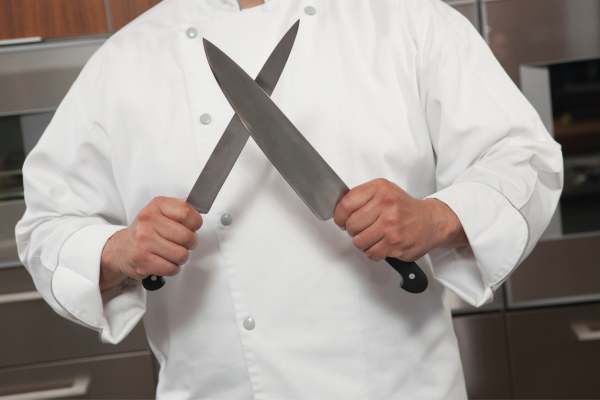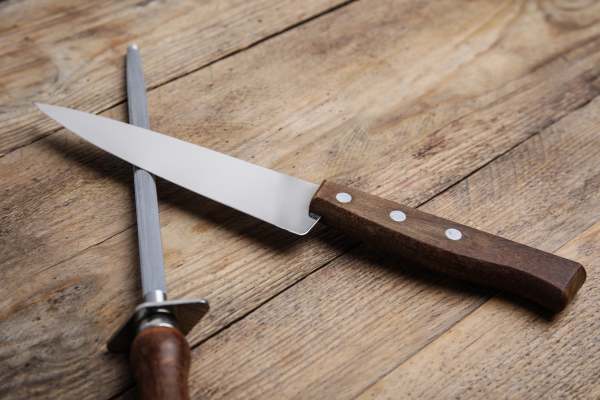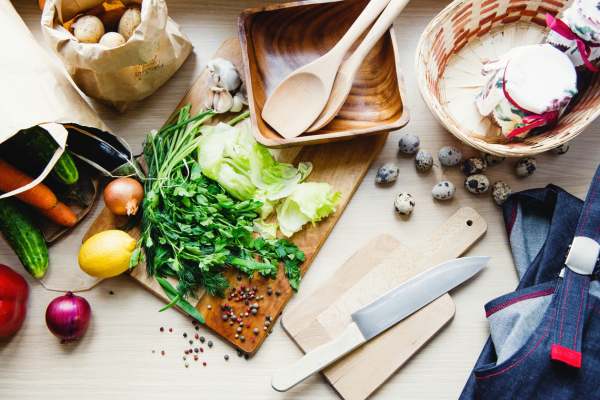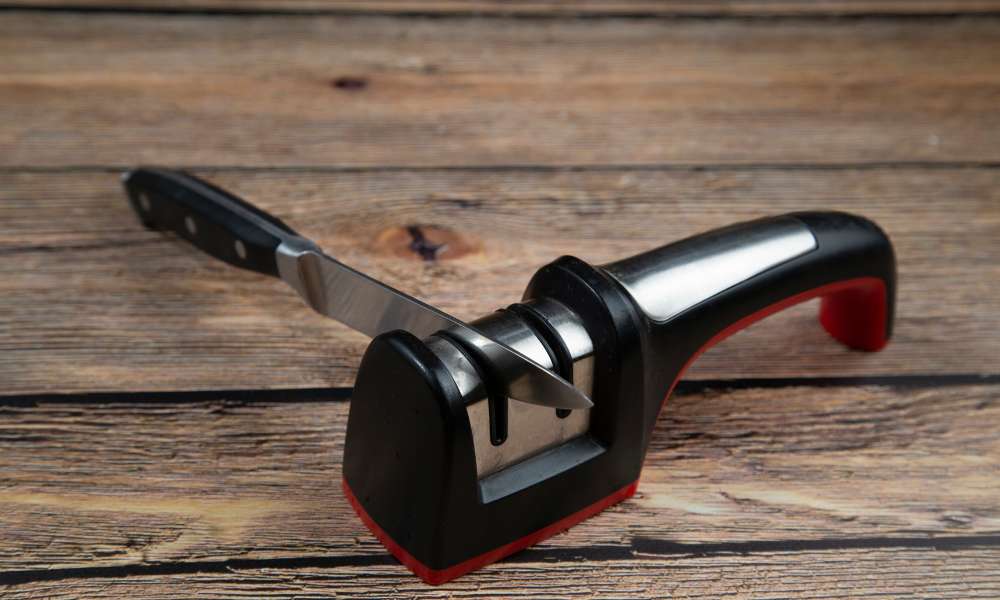Keeping your kitchen knives sharp is crucial for safe and efficient cooking. Dull knives are not only frustrating but also dangerous as they require more force, increasing the risk of slips and accidents. Enter the kitchen knife sharpener—a handy tool that can make your life easier and your cooking more enjoyable. But how exactly do you use a kitchen knife sharpener? This guide will walk you through everything from picking the right sharpener to mastering the technique, ensuring your knives are always in tip-top shape.
How Often Should I Sharpen My Knives?

The frequency with which you should sharpen your knives depends on how often you use them and the type of knife. As a general rule of thumb, most kitchen knives should be sharpened every 3-6 months with regular use. However, if you use your knives heavily or notice a decrease in cutting performance, it may be necessary to sharpen them more frequently.
Can I Sharpen Serrated Knives?
Yes, serrated knives can be sharpened, but it requires a different technique than sharpening traditional straight-edged knives. You will need a specialized tool called a serrated knife sharpener or a sharpening rod with a tapered end. To sharpen a serrated knife, you should only focus on the beveled side of the blade and run the sharpener along each individual serration to restore its sharpness.
Types Of Knife Sharpeners

1. Manual Sharpeners
Manual sharpeners are a popular choice for many home cooks due to their simplicity and effectiveness. To use a manual sharpener, place the sharpener on a stable surface and hold it firmly with one hand. With the other hand, insert the knife blade into the designated slot. Apply moderate pressure and pull the knife through the slot from heel to tip. Repeat this process several times, depending on the dullness of the blade. Manual sharpeners typically come with two slots, one for coarse sharpening and one for fine honing, ensuring a razor-sharp edge.
2. Electric Sharpeners
Electric sharpeners offer a quick and effortless way to sharpen your kitchen knives. To use an electric sharpener, plug in the device and select the appropriate sharpening setting. Place the knive blade into the sharpening slot and allow the machine to do the work. Most electric sharpeners have multiple stages, including coarse grinding and fine honing. Slowly pull the blade through each stage, following the manufacturer’s instructions. Electric sharpeners are ideal for those who prefer a hands-off approach and want consistent results every time.
3. Whetstones
Whetstones, also known as sharpening stones, provide a traditional and highly effective method for sharpening knives. To use a whetstone, first soak it in water for about 10-15 minutes. Place the whetstone on a non-slip surface. Hold the knife at a 20-degree angle and gently glide the blade across the stone, starting from the heel and moving towards the tip. Repeat this motion on both sides of the blade. Whetstones come in different grits, with lower grits for repairing damaged edges and higher grits for fine honing. This method requires some practice but yields excellent results.
4. Honing Rods
Honing rods, also known as sharpening steels, are used to maintain a knife’s edge between sharpenings. To use a honing rod, hold it vertically with the tip resting on a stable surface. Hold the knife at a 15-20 degree angle and draw the blade down the rod in a sweeping motion, alternating sides with each stroke. Honing rods do not remove metal but realign the edge, keeping the knife sharp and prolonging the time between sharpenings. Regular honing is essential for maintaining optimal cutting performance.
Efficiency In Cooking
Efficiency in cooking begins with mastering the art of using a kitchen knife effectively. One key tip is to hold the knife in a pinch grip, allowing for better control and precision when chopping ingredients. Additionally, keeping the blade sharp at all times ensures smoother and quicker cuts, reducing overall cooking time. Another helpful technique is to use a claw-shaped hand position when holding ingredients, protecting fingers from accidents while also enabling faster and more uniform slicing.
Setting The Angle
Setting the angle correctly is a fundamental step in using a kitchen knife sharpener. The angle at which you sharpen your knife can significantly affect its performance. Most kitchen knives require an angle between 15 to 20 degrees. Some sharpeners come with adjustable angle guides to help you achieve the perfect sharpening angle. Consistently maintaining this angle ensures that your knife remains effective for various kitchen tasks, providing clean cuts and reducing wear and tear on the blade.
Pulling The Blade
Pulling the blade through the sharpener properly is crucial for achieving a sharp edge. Start by placing the knife at the chosen angle and gently pulling it through the sharpener from heel to tip. It is important to apply consistent pressure and maintain a steady pace. Repeating this process a few times on each side of the blade will ensure even sharpening. Proper technique in pulling the blade through the sharpener not only restores the knife’s sharpness but also prolongs its lifespan, making it a reliable tool in your kitchen arsenal.
Post-Sharpening Care

Post-sharpening care is an essential aspect of maintaining your kitchen knives. After using a knife sharpener, it’s important to clean the blade thoroughly to remove any metal shavings. Wipe the knife with a damp cloth and dry it completely before storing it. Storing knives in a proper knife block or on a magnetic strip can help keep the blades in good condition. Additionally, using a cutting board made of wood or plastic, rather than glass or marble, can prevent the edges from dulling quickly. Regular honing between sharpening sessions can also help maintain a sharp edge.
Common Mistakes To Avoid

One of the most frequent errors is applying too much pressure while sharpening, which can damage the blade. It’s important to use consistent, gentle pressure to achieve the best results. Another mistake is neglecting to maintain a consistent angle throughout the sharpening process. Inconsistent angles can lead to an uneven edge and reduce the effectiveness of the knife. Additionally, many people forget to clean and dry their knives after sharpening, which can lead to rust and corrosion. Avoiding these mistakes ensures that your knives remain sharp and durable for longer periods.
The Final Thought
Mastering the art of using a kitchen knife sharpener can greatly enhance your cooking experience and efficiency in the kitchen. By maintaining sharp knives, you not only ensure safer and more precise cutting, but also prolong the lifespan of your knives. Remember to follow the manufacturer’s instructions carefully and practice proper technique to achieve optimal results. With regular sharpening and care, your knives will be ready for any culinary challenge that comes your way. Take the time to sharpen your knives regularly and enjoy the benefits of a well-maintained kitchen toolset.

